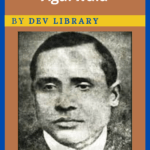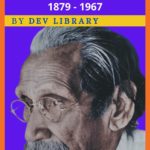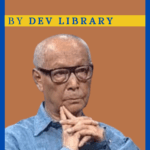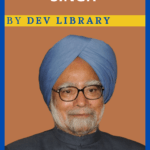The ancient name of Assam was Pragjyotishpur. On the other hand, Assam’s name was mentioned in mythological or ancient literature as Kamrup or Kamatapur. Later, from the mid-17th century of the Ahom rule, this land area became known as ‘Assam’. The ‘Varman’ dynasty is the first historical dynasty of ancient Assam. Kumar Bhaskar Varman was a well-known king of this Varman dynasty.

Biography of Kumar Bhaskar Varman
| Name | Kumar Bhaskar Varman[1] |
| Reign | 594 AD to 650 AD |
| Father’s Name | Susthita Varman |
Family History
Pushya Varman was the founder of the Varman dynasty. Kamrup is the first historical state established by Pushya Varman.It was from the establishment of the Varman dynasty that the real political history of the old Kamrup began.13 kings who ruled the Varman dynasty of which the first king of the dynasty was Pushya Varman. Pushya Varman was the contemporary king of Samudra Gupta. Importantly, Varman dynasty’s one of the major ruler was Susthita Varman. Susthita Varman had two sons. Supratisthita Varman and Kumar Bhaskar Varman. After the death of father Susthita Varman his son Supratisthita Varman came to power who ruled Kamrup. Importantly, after the death of Susthita Varman, Gour Raja attacked Kamrup but Supratisthita Varman and Bhaskar Varman prevented that attack. Supratisthita Varman ruled Kamrup from 593 AD to 594 AD. After only ruling for one year Supratisthita Varman died and after his death his brother Kumar Bhaskar Varman ruled kamrup. Bhaskar Varman was one of the famous kings of India at that time.
Also Read : Biography of Kushal Konwar
Reign
Kumar Bhaskar Varman ruled from 594 AD to 650 AD. He ascended the throne of Kamrup in 594 AD and ruled for 50 long years i.e. till 650 AD. He was an efficient powerful ruler of the Varman dynasty. He was called “Kumar Roja” by Banabhatta and Hiun Tsang. Bhaskar Varman was a contemporary of King Harshavardhana of the State of Kannauj in north India.
Importantly, Gour rulers Mahasen Gupta and Shashanka also occupied part of the Kamrup kingdom on the east side in the eve of Bhaskar Varman ascending the throne .Kamrup’s status deteriorated as Kamrup lost to Shashanka and lost his promotion. So Kumar Bhaskar Varman launched a diplomatic campaign against Gour to restore Kamrup’s lost status
On the other hand, the previous ruler of Harshavardhan was named Rajyavardhan. During the rule of the kingdom, King Shashanka of Gour state occupied some of Kannauj and unfortunately the state’s development died in the war with Shashanka.
It was for these reasons that Bhaskar Varman subsequently took over the reigns and sent a proposal for alliance with Harshavardhana and Kumar Bhaskar Varman’s alliance with King Harshavardhana of Kannauj was formed. Because Shashanka was also the main political enemy of Harshavardhana. For which Kumar Bhaskar Varman sent an alliance proposal with Harshavardhana through ambassador Hansabega. Importantly, while proposing alliance, Bhaskar Varman also sent a lot of valuables like Abhoga, ornaments made of animal horns, pearl beads, silk cloth etc.
The alliance strengthened Harshavardhan and Bhaskar Varman politically. It was this alliance that enabled Bhaskar Varman to play an important role in north Indian politics.
It was followed by a joint army of two monarchies attacking the Kingdom of Shashanka. Harshavardhana’s cousin Banadi invaded the Gour kingdom of Shashanka from the west while Kumar Bhaskar Varman invaded the Gour kingdom from the east. Unable to survive the attack by the combined forces, Shashanka fled to Orissa and ruled there from 619-620 AD. The victory in this campaign resulted in the fall of Gour state and its capital Karnasuvarna went under Bhaskar Varman. To preserve the memory of this incident Bhaskar Varman publishes the famous Nidhanpur inscription from Karnasuvarna. It also ensures that Bhruti Varman donates land to the redevelopment.
Importantly, Kumar Bhaskar Varman’s alliance with Harshavardhana not only regains Kamrup’s lost status but also regains the political importance and power that Kamrup has never gained as a work. Moreover Kumar Bhaskar was also invited to the dharam sabha organized by King Harshavardhana of Kannauj. In this meeting Harshavardhana met a Chinese traveller Hiun Tsang and requested him to visit Kamrup. Hiun Tsang visited Kamrup in 642 – 43 AD following Bhaskar Varman’s request and stayed in Assam for nearly a year and he left a note about Assam. According to a note written by Hiun Tsang on a visit to Kamrup , the spread of Kamrup at that time was about 1700 miles and the capital Pragjyotishpur was about 6 miles. Its climate was cold and healthy, the soil was fertile. The people of this country were short and small and the colour of their skin is copper colour. The people are simple and truthful. The king’s were all wise and hospitable for guests. The people’s use to worship God and Goddesses. In the country there was no influence, of Buddhism. Though, Bhaskar Varman was a Hindu but he respected the people of other religions equally. Importantly, at the request of Bhaskar Varman, Hiun Tsang returned to his country and translated a Chinese book called ‘Chi Yu Ki’ into Sanskrit language. It is to be noted that Hiun Tsang was pleased with Bhaskar Varman’s hospitality and was overwhelmed by the peace prosperity of Kamrup.
In addition, Hiun Tsang mentions in his note that Bhaskar Varman took a significant step to promote education in the state. It is to be noted that Bhaskar Varman also had a keen interest in Chinese literature and philosophy. Hiun Tsang called Kamrup as ‘Kam Lu Po’. Importantly, Hiun Tsang called Bhaskar Varman as Brahmin, although he is said to be wrong in this idea. Because Bhaskar Varman was ethnically kshatriya.
It may be recalled that when Hiun Tsang returned to his country, Bhaskar Varman presented him with various items, but he did not accept them. He only accepted a special skin cap just to escape from the sun.
Bhaskar Varman was a religious, shastra king. Bhaskar Varman is said to be the best king among the old Kamrup kings. During his reign, the honour of Kamrup state spread all over India. King Emperor Harshavardhana of the State of Kannauj also respected Bhaskar Varman immensely. Bhaskar Varman’s reign was a glorious chapter in ancient Assam.
Importantly, since Bhaskar Varman took charge of the rule in 594 AD the Bhaskarabad was introduced in ancient Assam. It is to be noted that Bhaskarabad is the first prevalent calendar of Assam. It is also known as Kamrupi year.
The best king of the Varman dynasty Kumar Bhaskar Varman was unmarried for which he had no privileged successor to carry out the rule smoothly in his later days. For which the Varman dynasty ended in approximately 650 AD after the death of Bhaskar Varman. Bhaskar Varman was the only best king of the Varman dynasty. Later, an officer named Shalstambha occupied the throne of Kamrup and established a dynasty called Shalstambha.
Conclusion
Bhaskar Varman’s nearly 50-year reign was a glorious chapter in the history of ancient Assam. Importantly, about his reign his own dip and copper pods in Nidhanpur, the seal of the land found in Nalanda in Bihar, Harshacharita composed by Pandit Banabhatta, the royal poet of King Harshvardhan of the Kingdom of Kannauj, the details are mentioned in The Tour Story of Huen Tsang. Kumar Bhaskar Varman was termed as the king of East India in Chinese content. The copper plate of Nidhanpur mentions that Bhaskar Varman was born to remove the registered darkness of the Kali era(yuga) and to establish Arya dharma in the world. The copper plate in Nidhanpur also mentions that “he was as skilled as Jupiter. He was without a crew and always took sides of justice. He was the best light, like the sun”.
The sinking copper plate mentions that Bhaskar Varman developed his intelligence through acquiring the meaning and knowledge of the scriptures and possessed sweet and poetic elocution.
Bhaskar Varman was the best king of the total 13 rulers of the Varman dynasty. Bhaskar Varman, who has shown tolerance for all religions, continued his efforts for all round development in all aspects of the state’s social economic culture etc., during his reign. Every time he tried for the welfare(happiness/fortunes) of the people. For which Kumar Bhaskar Varman is said to be the best king of ancient Assam.
FAQ
1. Who was Kumar Bhaskar Varman?
Ans: Kumar Bhaskar Varman was the greatest monarch of the famous Varman dynasty of the ancient kingdom of Kamrupa.
2. Who is the founder of Varman dynasty?
Ans: Pushyavarman is the founder of the Varman dynasty.
3. Who was the first king of Varman dynasty?
Ans: Pushyavarman is the first king of the Varman dynasty.
4. Who was the greatest ruler of the Varman dynasty?
Ans: Kumar Bhaskar Varman is the greatest ruler of the Varman dynasty.
5. When did Hiun Tsang visited Assam?
Ans: Hiun Tsang visited Assam in 642-43 A.D.
6. What was the gift accepted by Hiun Tsang?
Ans: A cap of skin.
7. According to Hiun Tsang what was the caste of Bhaskar Varman?
Ans: Hiun Tsang called Bhaskar Varman as Brahmin.
8.Who was the last ruler of Varman dynasty?
Ans: Kumar Bhaskar Varman was the last ruler of Varman dynasty.

Hi, I’m Dev Kirtonia, Founder & CEO of Dev Library. A website that provides all SCERT, NCERT 3 to 12, and BA, B.com, B.Sc, and Computer Science with Post Graduate Notes & Suggestions, Novel, eBooks, Biography, Quotes, Study Materials, and more.








